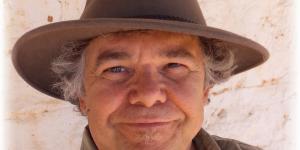
Thesis & Topic: An investigation of sustainable spinifex-harvesting and knowledge revival: A case study in northwest Queensland
This thesis is concerned with sustainable spinifex-harvesting near Camooweal in northwest Queensland, a region that is dominated by a resinous spinifex species, Triodia pungens, which has been used by Aboriginal people for thousands of years. More recently, spinifex has become the focus of bioengineering research that is examining the use of spinifex fibres and resin for their potential commercial use. In this thesis, a set of field experiments investigating post-harvesting regeneration, resin production cycels, and flowering phases were carried out. No previous spinifex-harvesting research had been undertaken in the region prior to the commencement of this study though much is known about post-burn regeneration of spinifex across northern and Central Australia. This situation means that there is considerable reliance (and perhaps over-reliance) on previous post-burn regeneration studies and ethnographic literature concerning spinifex and its use in attempting to discern how spinifex might regenerate if subject to harvesting, and to determine when and how the best time of year for extracting resin are. The primary aim of this thesis is to develop an understanding of spinifex ecology such that harvesting practices and knowledge of spinifex resin-cycles and flowering can underpin Indigenous ecological knowledge revival and future commercial applications of sustainable spinifex-harvesting in the study area.
The key objectives of the thesis are to:
The study site is located approximately 35 kilometers east of Camooweal and approximately 150 km west of Mount Isa on the Barkly Highway (Fig. 1). It lies within the spinifex grasslands in the Indjalandji-Dhidhanu tribal area.